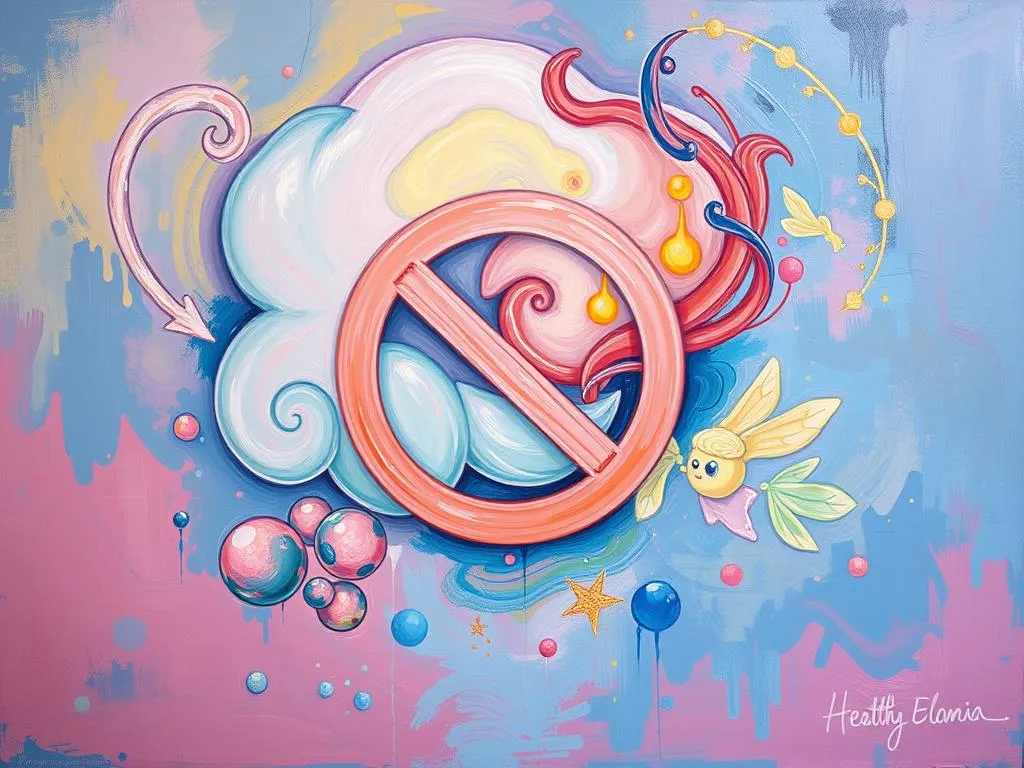
Have you ever woken from a dream, feeling a strange tension in your chest, only to dismiss it as nothing more than a figment of your imagination? Many of us do just that, often overlooking the profound wisdom our dreams can offer. Dreams are like a treasure chest of symbols, messages from our subconscious that can help us navigate our waking lives. Yet, when we encounter concepts or emotions we don’t want to face, we tend to deny their significance. This denial can lead to missed opportunities for growth and understanding.
In this article, we will delve into the concept of dream symbol denial, exploring its psychological roots, cultural perspectives, and the potential for personal transformation that lies within our dreams. So, grab a cup of tea, sink into your favorite chair, and let’s embark on this journey together.
Unraveling the Veil: The Symbols We Ignore
Dreams are often filled with rich symbols that can serve as mirrors reflecting our deepest emotions and desires. However, when faced with symbols that evoke discomfort or fear, many people default to denial, pushing these insights aside. This reaction can stem from a variety of sources, including societal conditioning and personal experiences.
Cultural perspectives also play a significant role in how we interpret dream symbols. For example, in many Indigenous cultures, dreams are seen as sacred messages. To ignore them would be akin to turning away from guidance from the spirit world. In contrast, mainstream Western culture might categorize dreams as mere brain activity during sleep, leading to a tendency to dismiss them outright.
Psychologically, denial serves as a defense mechanism that protects us from confronting uncomfortable truths. Carl Jung, a prominent figure in dream analysis, believed that symbols in our dreams often represent parts of ourselves we have yet to accept. When we deny these symbols, we deny those aspects of ourselves, which can lead to internal conflict and stagnation.
Some common symbols that might trigger denial include:
- Death: Often misinterpreted as a literal end, it may signify transformation or change.
- Water: Typically associated with emotions, its presence could indicate suppressed feelings.
- Chase: A symbol of avoidance, it suggests a fear of facing certain issues in our lives.
- Nudity: Representing vulnerability, it can evoke feelings of exposure or shame.
- Falling: Often linked to insecurity, it may reflect a fear of losing control.
By recognizing these symbols and their potential meanings, we can start to dismantle the barrier of denial. Acknowledging the emotions tied to these symbols can open the door to deeper self-awareness and healing.
Facing the Shadows: Scenarios of Denial in Dreams
Let’s explore some common scenarios where dream symbol denial might manifest. Each of these examples illustrates how denial can obstruct personal growth and insight.
1. The Haunted House
Imagine dreaming of wandering through a dark, abandoned house, filled with cobwebs and eerie shadows. You feel an overwhelming urge to leave, yet something keeps drawing you back. This house represents your past, filled with memories and emotions you’ve chosen to ignore. Instead of confronting what they mean, you wake up and dismiss the dream as just a nightmare.
Advice: Consider what the house symbolizes for you. Is there a part of your past you need to confront? Embracing those memories can facilitate healing.
2. The Weight on Your Chest
You dream of being suffocated by an unseen force, unable to breathe or speak. You wake up gasping, dismissing it as just a bad dream. However, this dream likely represents feelings of anxiety or unexpressed emotions in your waking life.
Advice: Reflect on what is causing you stress. Instead of denying these feelings, allow yourself to acknowledge them. Journaling can be a powerful tool to explore these emotions further.
3. The Endless Search
In your dream, you find yourself lost in a maze, desperately trying to find your way out. Each turn leads to dead ends, and frustration builds as you wake up without resolution. This scenario symbolizes your feelings of being lost in life, yet you shrug it off as just a confusing dream.
Advice: Embrace the idea that feeling lost is part of the journey. Instead of denying your confusion, seek clarity by setting small, achievable goals in your waking life.
4. The Broken Mirror
You dream of standing before a shattered mirror, your reflection distorted and fragmented. You feel discomfort and turn away. This symbolizes self-image issues or insecurities you prefer not to confront. Choosing to ignore it only deepens your struggle with self-acceptance.
Advice: Engage in self-reflection. What aspects of yourself are you struggling to accept? Practicing self-compassion can aid in healing your relationship with yourself.
5. The Unseen Audience
Picture yourself performing on stage, but every time you look out, the audience is laughing at you or staring blankly. You wake up feeling embarrassed and laugh it off. This scenario often reflects fears of judgment or inadequacy that you might not want to acknowledge.
Advice: Instead of brushing it off, consider what drives your fears of judgment. Engaging in conversations with trusted friends can help you gain perspective and reassurance.
Embracing the Journey: Transforming Denial into Growth
Now that we’ve explored the symbols and scenarios that often elicit denial, let’s discuss how we can shift our perspective and embrace these insights for personal growth. The path to overcoming denial involves several key steps.
1. Awareness and Acceptance
The first step is recognizing that denial exists. When you wake from a dream, take a moment to reflect on it. What emotions did it stir? What symbols stood out? Accepting that your dreams hold meaning can open the door to deeper understanding.
2. Journaling: Your Dream Diary
Consider keeping a dream journal. Write down your dreams as soon as you wake up, capturing not only the narrative but also your feelings. Over time, you may begin to notice patterns or recurring symbols, which can offer valuable insights into your subconscious.
3. Seek Guidance
Sometimes, discussing your dreams with others can provide clarity. Whether it’s a friend, therapist, or a dream interpretation group, sharing your experiences can reveal perspectives you hadn’t considered. Don’t shy away from seeking help; it can be a powerful catalyst for understanding.
4. Integrate Insights into Daily Life
Once you start recognizing and interpreting your dreams, think about how those insights can be integrated into your waking life. If your dreams point to certain fears or unresolved issues, take small steps to address them. This could mean having a difficult conversation, setting boundaries, or pursuing a passion you’ve sidelined.
5. Cultivating a Curious Mindset
Lastly, approach your dreams with curiosity rather than fear. Instead of dismissing unsettling symbols, ask yourself what they might be trying to teach you. Embrace the idea that every dream is an opportunity for growth.
In conclusion, the journey of understanding dreams is not just about interpreting symbols but also about confronting the emotions and truths we often deny. By acknowledging and embracing these dreams, we can uncover profound insights that guide us toward personal transformation.
Reflect on this powerful truth: our dreams are not just fleeting images; they are windows into our souls, revealing the parts of ourselves we might be too afraid to confront. Embrace them, for within those shadows lies the light of understanding and growth.







